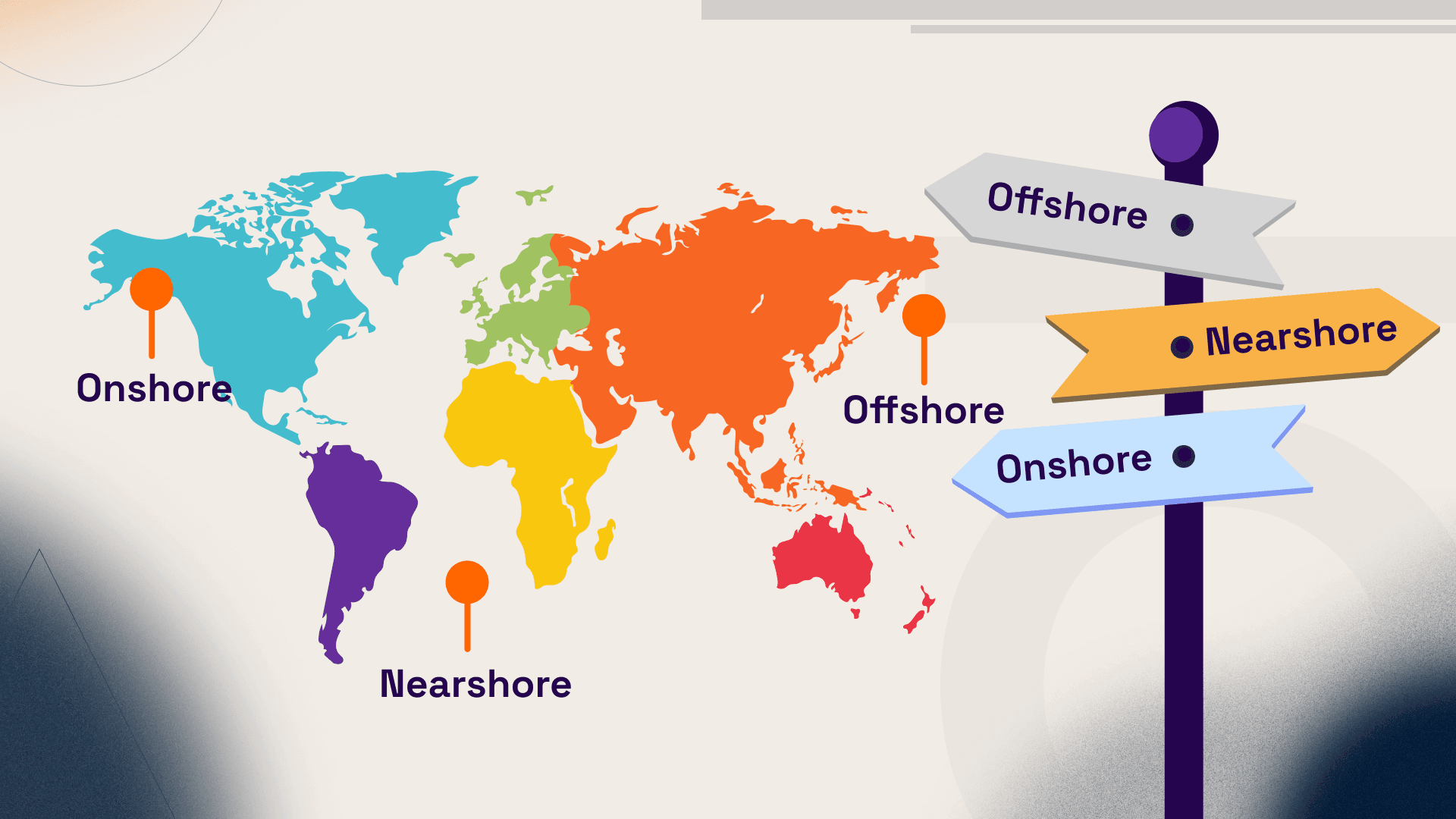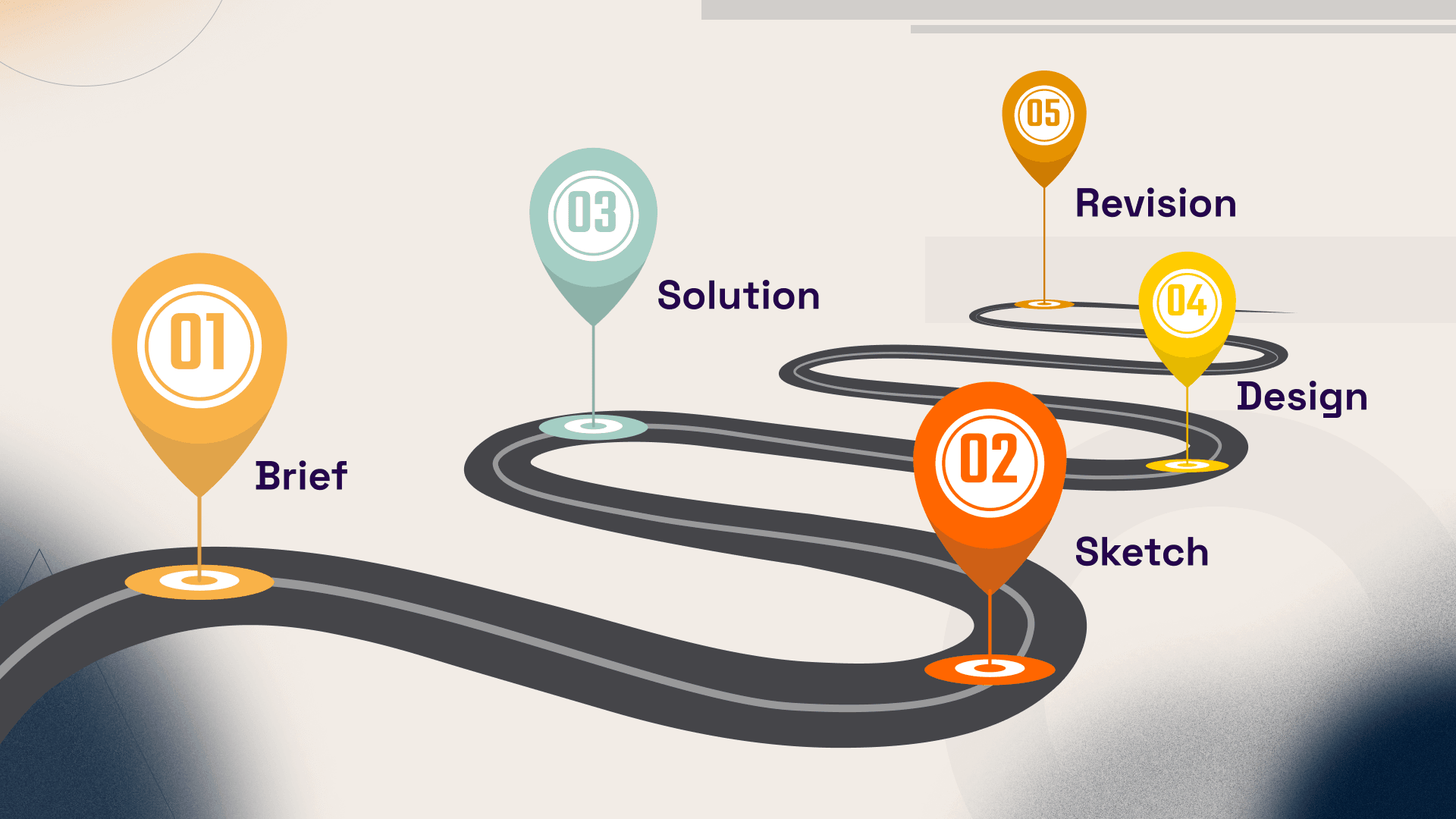
Statista predicts the IT outsourcing market will hit $812.7 billion by 2029. As it expands, competition among vendors intensifies. In this landscape, finding the perfect outsourcing contractor becomes a strategic decision that impoves the time-to-market and product quality. Let’s find out what the key factors are to consider when choosing a software development outsourcing company, and how not to fall for the most common mistakes.
Why Choosing the Right Contractor Matters for Your Business
Picking a software outsourcing company is more than a task — it’s a strategic decision that can shape your project’s outcome from day one. Here are five key risks to watch out for.
- Budget Overruns. An underqualified contractor can possibly underestimate the project scope, fail to meet deadlines, or need repeated rework — all of which drive up costs and drain resources.
- Missed Deadlines and Lost Clients. Delays can push back your launch, hurt competitiveness, and cause you to lose loyal users who were expecting timely delivery.
- Security Issues. If basic security practices are ignored, it opens the door to data breaches, IP problems, and non-compliance with GDPR — all of which carry serious legal and reputational risks.
- Communication Breakdowns. Research from Coaio shows that nearly 30% of outsourced projects fail due to misalignment between clients and contractors. Poor communication and lack of transparency can quickly derail even the most promising collaborations.
- Unclear Collaboration Terms. Without a clear agreement on expectations, roles, and legal protections, even experienced teams can fall into the top outsourcing mistakes — missteps that could have been avoided with proper groundwork.
To help you spot potential risks early, we’ve outlined a practical set of steps. These will support you in selecting a reliable contractor, avoiding the top outsourcing mistakes, and establishing a solid professional connections with a company offering outsourced software development services.
Step 1. Determine the Right Collaboration Format
 Choose a model that best fits your strategic objectives, financial framework, and the degree of oversight you wish to retain during the development lifecycle.
Choose a model that best fits your strategic objectives, financial framework, and the degree of oversight you wish to retain during the development lifecycle.
- Freelancers. Hourly rates typically range from $10 to $50, depending on the country. They are flexible and fast to onboard but often work without established processes or formal organization. Key risks include lack of guarantees, dependence on one person, difficulties with IP rights, and inconsistent quality control.
- Small Agencies. Hourly rates generally fall between $25 and $100. They operate with established internal processes and offer various collaboration models. Their flexibility is moderate, sufficient for adaptation but often constrained by limited resources. Main risks include a narrow technology stack, limited specialization, and restricted legal responsibility.
- Medium and Large Companies. Their rates usually range from $50 to $150 per hour. These companies cover the full software development life cycle (SDLC), including QA, technical documentation, and legal support. Although less flexible than Freelancers, they compensate with scalability, service-level agreements (SLAs), and robust security measures. The primary downsides are higher pricetags and occasionally longer decision-making processes.
For a deeper look at which collaboration format suits you best, check out the article How to Choose Between a Freelancer and an Agency: Key Criteria and Tips.
Step 2. Define the Collaboration Geography
 The location of your contractor impacts not only costs and communication speed but also time zone alignment, cultural fit, and legal factors.
The location of your contractor impacts not only costs and communication speed but also time zone alignment, cultural fit, and legal factors.
- Onshore Outsourcing is working with companies from your Motherland. This option offers clear advantages in legal compliance, cultural understanding, and smoother communication.
- Nearshore Outsourcing involves partnering with contractors from nearby countries or regions within similar time zones. It provides a good balance between cost efficiency, quick responsiveness, and cultural compatibility.
- Offshore Outsourcing refers to engaging teams from distant regions such as India, the Philippines, Latin America, or Eastern Europe. The key advantage is lower hourly rates ($20–50/hour), though it may come with challenges like time zone gaps, language differences, and local tax regulations.
When choosing a contractor, weight these aspects in light of your business aim and expectations. For a detailed overview of geographic models, see our article Onshore and Offshore Software Development: Meaning and Key Differences.
Step 3. Assess Technical Expertise and Process Maturity
When choosing an outsourcing partner, carefully evaluate their work organization, security measures, and technical proficiency. These elements are crucial for ensuring your project’s stability and long-term success.
Focus on the following criteria:
- Well-Established Development and Security Processes. A comprehensive SDLC, automated CI/CD pipelines, strict access controls, and thorough code reviews minimize risks and accelerate deployments.
- Systematic Testing Approach. A dedicated QA team, clear documentation, and a mix of manual and automated testing are essential. A reliable software testing outsourcing company never skips this stage.
- Official Certifications. Possession of ISO 9001 and ISO 27001 certifications demonstrates adherence to global quality management and information security standards.
- Technology Compatibility. The vendor’s technology stack and development practices should align with your own, ideally supported by experience in similar industries or projects.
- Clear Communication Skills. The team must be proficient in English, capable of articulating questions, clarifying expectations, and consistently providing transparent updates.
- Social Proof. Evaluate case studies, client testimonials, Net Promoter Scores (NPS), and profiles on trusted platforms like Clutch to gauge reputation.
- Flexible Collaboration. Providing a range of engagement models — such as Time & Material, Fixed Price, and Dedicated Team — allows you to adapt the partnership to suit various project stages and budget constraints.
These criteria will help you evaluate a contractor’s capabilities and select the one that best fits your requirements.
Step 4. Avoid Common Mistakes When Signing a Contract
Many challenges arise even before development begins — right at the contract stage. Here are the most frequent outsourcing mistakes to watch out for:
- Undefined or Vague Statement of Work (SoW). Without clear details on features, deadlines, and acceptance criteria, misunderstandings, budget overruns, and delays become more likely.
- Lack of Financial Safeguards. Paying the full amount upfront or without any guarantees leaves you powerless to enforce quality or timelines.
- Skipping the PoC (Proof of Concept). Without a trial project, it’s difficult to assess the team’s technical capabilities, working style, and fit with your expectations.
- Incomplete IP and Data Terms. Not clearly defining code ownership, licensing rights, and GDPR compliance can lead to legal disputes and loss of control over your product.
Even one of these errors can seriously hamper collaboration, so invest as much care in contract preparation as you do in the technical planning.
Step 5. Review Legal Documents
Legal terms are as crucial as technical details. Use this checklist to make sure your contract with the contractor provides solid protection:
- Check the NDA (Non-Disclosure Agreement). It must forbid both the company and its employees from disclosing confidential information.
- Review the DPA (Data Processing Agreement). Clearly outline how personal data is processed, who is accountable, and confirm compliance with GDPR.
- Clarify the SLA (Service Level Agreement). Include guarantees such as minimum uptime, response times for incidents, and escalation procedures.
- Specify the jurisdiction for dispute resolution. Ideally, select a neutral country or an arbitration body with a reputable track record.
- Define Force Majeure and Exit Plan clauses. Establish procedures for handling force majeure events and clear conditions for terminating the partnership without jeopardizing your business.
Omitting or having vague terms in these areas may leave you vulnerable to conflicts, contractual breaches, or critical data exposure.
Step 6. Test the Team in Action
 To make the right choice, it’s essential to observe the team in action under real conditions:
To make the right choice, it’s essential to observe the team in action under real conditions:
- Conduct a technical interview. Pay attention to developers’ ability to explain their decisions clearly, think systemically, and ask insightful questions.
- Assign a practical task in a pair-coding setting. Assess how well the team collaborates, provides feedback, and follows clean code principles.
- Run a mini-sprint lasting 1–2 weeks. Monitor how the team plans the sprint, allocates tasks, meets deadlines, and communicates progress.
- Evaluate soft skills. Look for openness in communication, receptiveness to feedback, clarity in explanations, and accountability.
- Check for an agile culture. Verify if iterative approaches are used, regular discussions occur, results are reviewed, blockers are solved proactively, and the team adapts flexibly to changes.
This method allows you to gauge not only technical competence but also work ethic, collaboration style, and the team’s capability to be a genuine partner, not just a service provider.
Step 7. Make an Informed Decision
Rather than relying solely on intuition, use a decision matrix to objectively evaluate contractors against your most important criteria.
- Determine which criteria are most critical for your project.
- Assign a percentage weight to each criterion, ensuring the total adds up to 100%.
- Score each contractor on a scale from 1 to 5 for each criterion.
- Multiply each score by its corresponding weight and sum the results. The contractor with the highest total score is the best fit.
| Criterion | Weight (%) | Company A (1–5) | Company B (1–5) | Weighted Score A | Weighted Score B |
|---|---|---|---|---|---|
| Cost (hourly rate/sprint price) | 25% | 4 | 3 | 1,00 | 0,75 |
| Speed of start/response | 15% | 5 | 3 | 0,75 | 0,45 |
| Quality of portfolio and cases | 25% | 4 | 5 | 1,00 | 1,25 |
| Flexibility of collaboration | 10% | 3 | 4 | 0,30 | 0,40 |
| Reputation (reviews, Clutch, NPS) | 10% | 4 | 4 | 0,40 | 0,40 |
| Risks (security, legal maturity) | 15% | 3 | 5 | 0,45 | 0,75 |
| Total Score | — | — | — | 3,90 | 4,00 |
Conclusion
Selecting the right contractor is a strategic choice that influences your product’s time-to-market, data protection, cost-effectiveness, and ability to scale.
To minimize risks and ensure success, choose partners thoughtfully by evaluating not just price, but also their technical proficiency, process maturity, adaptability in collaboration, and strength of legal protections.
If you need help choosing an Outsourcing Company, contact Osmium. We offer a free audit of your technical requirements, provide a PoC project, and assist in selecting the team that best fits your business goals.

